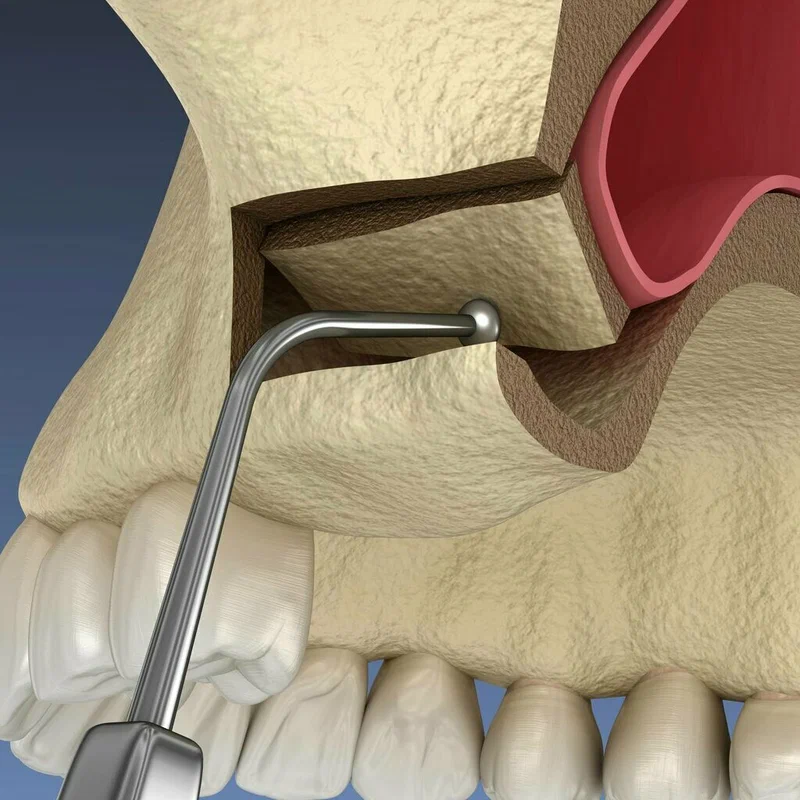The concept of sinus lift before dental implant defines a surgical procedure designed to add bone to your upper jaw in the area of your molars and premolars before the process of dental implant. This procedure is common for people who are looking to receive dental implants but lack the necessary bone density. Over time, bone loss may occur in this area due to tooth loss, gum disease, or the natural anatomy of the sinus cavity, making the sinus lift a vital step for implant success. As Vivimedi Travel Agency, we provide meeting with the best certified instutitions for sinus lift process for you in Turkey.
Why is a Sinus Lift Needed Before Implants?
Dental implants require a solid foundation of bone in which to anchor. In the upper jaw, the maxillary sinus may sit too close to the area where the implant needs to be placed. Without sufficient bone height, the implant cannot be securely placed, increasing the risk of failure. The sinus lift is needed to elevate the sinus membrane and create space to insert bone graft material, ultimately creating the necessary bone structure to support an implant.
The Sinus Lift Procedure
The sinus lift is performed by an oral or maxillofacial surgeon, and the specific steps may vary slightly depending on the patient’s anatomy and the amount of bone augmentation required. Below are the general steps involved:
Pre-Surgical Evaluation:
-
- A comprehensive examination is conducted, including 3D imaging or CT scans to assess the bone structure, sinus position, and any other anatomical details.
- Based on this assessment, a customized plan is devised.
Accessing the Sinus:
-
- A small incision is made in the gum tissue where the back teeth are missing.
- The bone is then exposed by gently lifting the gum.
- A small window is created in the bone to access the sinus membrane.
Lifting the Sinus Membrane:
-
- The delicate membrane lining the sinus cavity is carefully lifted upward, creating space between the jawbone and the sinus cavity.
Bone Grafting:
-
- Bone graft material, which may come from the patient (autograft), a donor (allograft), synthetic materials (alloplast), or animal sources (xenograft), is placed in the newly created space.
- The bone graft material stimulates new bone growth and acts as a scaffold for the body’s natural bone to grow into.
Closing the Incision:
-
- The surgical site is closed with sutures, and healing begins.
A sinus lift can greatly enhance the success of dental implants in the upper jaw, especially for individuals with inadequate bone structure due to tooth loss or anatomical factors. Although the procedure involves additional time and recovery, it provides a strong foundation for long-lasting, secure dental implants. With advances in techniques and materials, sinus lifts are generally safe and effective, making dental implants an option for more patients. As with any procedure, it’s essential to consult with an experienced surgeon to ensure the best outcome.


